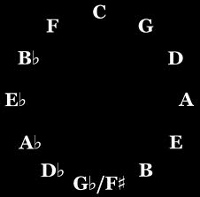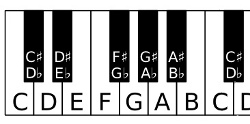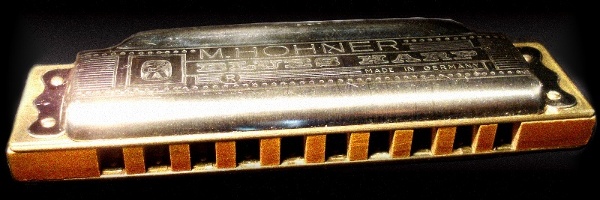You might be wondering how harmonica keys and positions relate to each other, all the different positions (of which there are 12) follow a simple rule: For each consecutive position the key moves a fifth (7 semitones) above the key of the previous position – following what is know as a circle of fifths.
 So on a C harp, here are the position
So on a C harp, here are the position
and key relationships:
1st position – key is C
2nd position – key is G (a fifth above C)
3rd position – key is D (a fifth above G)
4th position – key is A (a fifth above D)
5th position – key is E (a fifth above A)
etc.
On harp this would correspond to playing the root notes (lowest) on the following holes:
1st position – 1 blow
2nd position – 2 draw
3rd position – 1 draw
4th position – 3 draw bend (full)
5th position – 2 blow
and this holds true for every harp regardless of its key, like in 2nd position, root is always 2 draw – it’s all relative!
Just a word of caution, when counting fifths it is tempting to just count five steps of the C major scale, so a C harp in 2nd position would be in the key of C.. D.. E.. F.. G… key of G, yes that’s fine until you get to a B harp, 2nd position and count B.. C.. D.. E.. F.. key of F, which is wrong, 2nd position would actually be F# (or Gb). This happens because you haven’t counted a fifth, since B to F contains only 6 semitones (should be 7 semitones). This is easier to visualize on a keyboard, where as you can see there is always only a semitone between B to C and E to F.

Armed with this information, you should now be able to work out all the 12 positions which correspond to the 12 keys of a chromatic scale. However, unless you’re playing chromatically with overblows you probably won’t need to know all this – many blues players stick to 2nd position most of the time.

